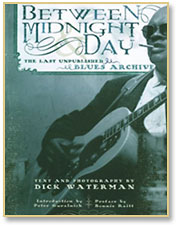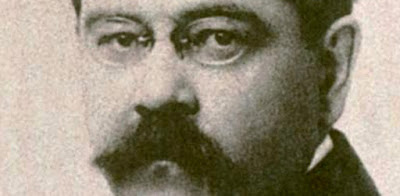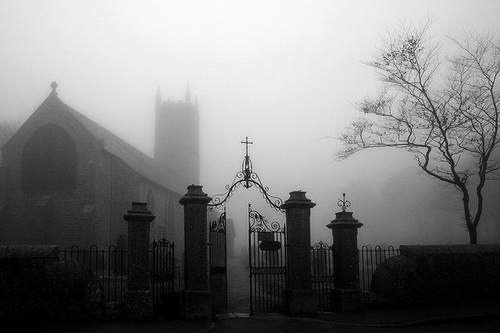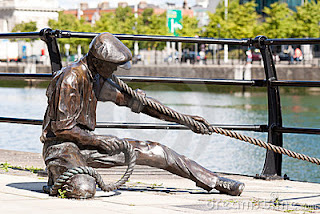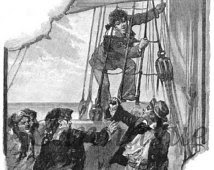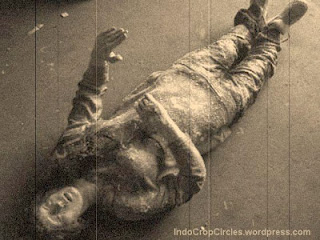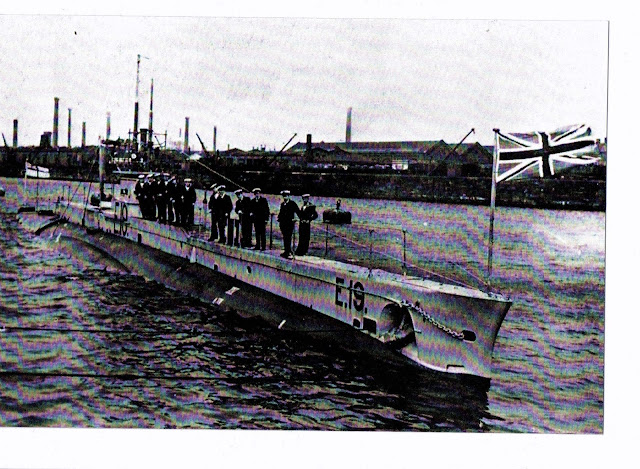Hard Case
“It's only after we've lost everything
that we're free to do anything.”
Chuck Palahniuk, Fight Club
The sun shone through the ornate windows of the Café Delmas and glittered on the cutlery. Sharon gazed out at the Parisians, or perhaps more accurately, the tourists, criss-crossing the Place de la Contrescape. Brian had been right, of course, and as he sat opposite, sipping his coffee, she could see that ‘I told you so’ look in his eyes. His romantic streak had brought them here to the City of Light, and perhaps, after 40 years together, she ought to have recognised what he’d had in mind. Yet dreamy though this all was, as she sat there, she couldn’t help replaying that day of argument a month before …
“Oh, bloody sodding great,” she spat the words out as if ejecting a wayward fly which had entered her mouth.
“Our 40th wedding anniversary, and despite everything I’ve said now you want us to go to Paris?”
“Well,” he said, trying to sound conciliatory, “it’s all about romance, surely?”
“Well it might be, but I know you. You’ve been banging on about Paris and all that period after the First World War ever since you saw Woody Allen’s Midnight in Paris. You’re not so much thinking about our romantic anniversary as trawling around places where Picasso and all that Bohemian lot hung out.”
“Well, that’s not fair. That’s all part of the romance of Paris, isn’t it?”
“It might well be, but you ignored me when I suggested Tuscany, and then I thought we’d agreed on Sicily. You’re as big a fan of Inspector Montalbano as I am - I wanted to see his apartment by the sea. Now it’s bloody Paris! And there’s the weather to contend with. It’ll be lovely in April in Sicily - but Paris?”
“Well, doesn’t the phrase ‘Paris in the spring’ mean anything?”
“Yes, but Palermo in the spring sounds even better.”
“But Paris is the most romantic city in the world.”
“And it’s full of pretentious French people!”
“Well - what about the Mafia?” he asked, in a quieter voice.
“The sodding Mafia?”
“Yes - the cosa nostra, the mob - Palermo - that’s their headquarters. We might get whacked.”
“Who do you think we are? Tony and Carmela Soprano? Are you some secret ‘made man’ or something? The bloody Mafia- you do talk crap some times.”
He flopped onto the sofa and lit a cigarette.
“OK, let’s do a deal. Three days in Paris, then we’ll fly to Sicily for three days.”
She sighed and shook her head.
“Yeah, right. We barely get unpacked in Paris before we’re packing again for Sicily. Some bloody anniversary holiday this is turning out to be.”
The argument continued. After a good night’s sleep, the next day she had been at the hairdressers. Mavis, the stout, middle-aged happy-go-lucky proprietor listened to the story of Paris vs. Palermo, her voice soaring above the hum of the hairdryers.
“Well, love, if you ask me, Paris is a better bet for an anniversary. I went there with my Jack before he died and it really is as romantic as they say it is. And it’s civilised. You know where you stand in a place like that. You’ve got great transport, the Metro, terrific restaurants, Notre Dame, the Seine … mind you, I don’t know much about Sicily but it looks a bit dilapidated to me. A lot of crime they say. I suppose you can get good pizzas and pasta there, but it’s not what I’d call a top tourist destination. But Paris? Oh, Sharon, you ought to give it a try, honest. You’ll thank me for it. Save Sicily for next year.”
And so they had agreed. A week in Paris and a week in Sicily the following year. Sharon felt defeated, and Brian was elated. Yet now they were in Paris, and indeed the mild spring was everything she’d hoped it would be, she had to admit that as an anniversary venue, there was none better.
After finishing their coffee they wandered along the crowded Rue Moffetard. Getting in with the ambience, Brian lit up a Gitanes and placed an arm around her shoulder.
“Well, what do you think?”
“All right, smartarse,” she said, “it’s all fine but for one thing.”
“The hotel?”
“You must be psychic. Yes. What’s it called again?”
“The Hotel Saint Medard.”
“I don’t know who Saint Medard was, but he would have to be a saint to have stayed there. And vertically challenged. It’s a dump.”
“Look, love, just because it’s old, and has historical character, doesn’t make it a dump. I know it’s a tough climb up those stairs to that top room - “
“Room? Hell, Brian, it’s a cupboard! Getting out of bed for a pee last night was an obstacle course. I sat on the edge of the bed and almost scraped my knees on the wall. All that creaky old panelling and floorboards. Our garden shed’s more comfortable.”
“Yes, all right, I get the message. But it’s booked and paid for now, and we only need to be there for bed and breakfast, so it’s not the end of the world. Come on, after we’ve checked out where Gertrude Stein and Cole Porter used to live, we’ll find a restaurant for tonight and get some champagne down our necks. That’s why we’re here.”
As they ambled along Sharon mulled over that last bit - ‘that’s why we’re here’. Of course they couldn’t be in Paris and not see all the artistic places of interest which occupied Brian so much, but if they’d been in Palermo there wouldn’t have been quite this amount of cultural tourism to deal with. She swore to herself that when they got to Sicily, she’d be in charge.
The Hotel Saint Medard was a four-storey ramshackle edifice down an ancient cul-de-sac off the Rue Monge. It seemed to have survived everything French history might have thrown at it. The Revolution, Napoleon, two world wars. It had obviously never been built as a hostelry. Perhaps, in the mists of time, some Parisian artisan family had lived here, but judging by the size of the rooms they could well have been dwarves. The un-carpeted stairs creaked with every step, the staircase winding its way up past the first three floors through narrow, almost Stygian gloom, the width so tight that you had to keep your elbows in to avoid scraping them on the ubiquitous timeworn, dark wood panelling.
After an afternoon of walking old streets and photographing various blue commemorative plaques, they had returned to the hotel to freshen up and get ready for their anniversary dinner.
From the tiny top window of their room, they could at least see the open spaces of the Square Capitan. Sharon gazed over at it as the afternoon sun cut low through the trees. It was an unusual sight, a mix of what appeared to be an outdoor arena and colourful flower beds.
“What’s that place, Brian?” He moved over to the window, his guide book in his hand. He leafed through the pages then began to read.
“Square Capitan. It was when Rue Monge was being built in 1870 that the Arènes de Lutèce were discovered. The inhabitants converted this Gallo-Roman amphitheatre into a cemetery when Lutetia was invaded by barbarians in 285 AD. It was then turned into a square in 1918. Square Capitan next to the Arènes de Lutèce is named after doctor, anthropologist and historian Louis Capitan, who redesigned it in the style of a formal Italian garden in 1916.”
“Thank you, Simon Schama,” she said, as he patted her gently on her derriere.
Whilst she struggled with the throes of ablution in the cramped shower cubicle, Brian pushed open the small window so that he could lean out for a smoke. As he moved into position with his elbows on the window ledge, his trousers became snagged on what appeared to be the head of a nail protruding from the wood panelling on the adjoining wall. As he cursed under his breath, tugging at his pants to release them, he began to thoroughly agree with Sharon. This place was too small for anything but hobbits. He’d begun to regret turning down a deal at the Holiday Inn in exchange for his surrender to a more historical experience. He bent down, yet as he tugged to free himself, suddenly the ancient nail slid out of the corner of the old panel. The wood became loose, and as he disentangled the nail from his trousers, he noticed that the panel was now jutting a good two inches from the wall.
Ever the curious romantic, Brian stared at this and pondered over the potential fact that this panelling had been in place for perhaps two centuries. Like a kid staring into a cave and expecting bats, he wondered what might be there in that narrow margin of blackness behind the loose corner of the panel. The temptation was too much; he tugged at the wood, and other tiny nails around its edges began to pop out until, with a creak and a cloud of grey dust, it fell away and onto his feet.
He was taken aback by what he saw. There, in a cavity about two feet deep, lay what appeared to be a leather suitcase. It was encrusted with dust and old cobwebs. Then a slight wave of panic overcame him. He was in an ancient Parisian hotel and he’d damaged the fabric of the room. What would the manager say, how much would this cost? Yet he calmed down, realising that he could easily put the panel back and perhaps knock the nails in with the heel of a shoe. It was that leather suitcase which began to obliterate any other concerns. He leaned down, carefully thrust his hand into the cavity and grabbed the handle. Whatever was in the case, it was heavy. He pulled it out but the handle had rotted slightly and bits of old leather flaked between his fingers. It was messy, but he still had the copy of the newspaper he’d read on the plane. He found it, spread the pages out to cover the double bed, and hauled the case onto it.
The locks on the case had all but rusted away, but they still held the lid in place. He tried to free them with his thumbs, but they seemed solid. He went over to his shoulder bag and retrieved his Swiss Army knife. He dug the blade into the key slots in the locks and first one, then the second, clicked open.
“What the bloody hell have you got there?”
Startled, Brian looked round to see his semi-naked wife drying herself with a towel, staring in horror at the mess on the bed. She then glanced at the hole in the wall and the panel on the floor.
“Brian! For God’s sake! Have you taken leave of your senses? What a bloody mess - this is a hotel, not a garden shed! Who do you think you are - Keith bloody Moon?” He realised how bad all this looked yet his heart raced with excitement. He raised his hands, palms outwards.
“It wasn’t my fault, love. I caught the panel on my trouser leg and it came away - and this was hidden in that hole.” Sharon tied the towel in a turban on her head whilst glaring at him.
“It’s bugger all to do with us. It belongs to the hotel. Whatever that is, Brian, put it back, stick that bit of wood back on, and clean that mess up, or this is going to cost us a packet. Good God, you’re like a kid sometimes!”
“Don’t you want to see what’s in it?”
She puffed out her cheeks and blew out in exasperation, shaking her head violently.
“No, put it back! For Chrissakes, Brian - it’s our wedding anniversary, not Raiders of the Lost Ark! “
But he was having none of it.
“Sorry, love. I’ll put it back but first,“ he began to prise the case open, “I want to know what this is.” The old leather seemed to crack and groan as the lid was forced back. What appeared to be some crumpled clothing, perhaps silk, formed a top layer. At the side of this was a small leather satchel. He picked it up and opened it. Inside were some small bottles, a bar of soap, a dried-out, rotting flannel, and what appeared to be a lipstick tube and a rusting powder compact. Sharon stood by, clasping her hand to her mouth in nervous awe. He laid the items on the bed, and the rest of the case’s contents were revealed. Wads of type-written sheets of quarto paper, some tied with faded blue and red ribbons. The whole case was filled with these manuscripts, some obviously carbon copies. Brian deftly removed one and blew the dust from its cover page, then gasped, falling to his knees at the side of the bed. Sharon stared anxiously down.
“What’s up?”
He held up the manuscript in one hand and traced with a shaky, trembling finger across the title line, which read
INTO THE FOREST
A Short Story
By
Ernest Hemingway.
He dropped it onto the bed and frantically rummaged through all the other manuscripts, gasping at each one. He turned to Sharon, who was still frozen in her stunned, mouth-clutching posture.
“Christ, love. Do you knowwhat this is?”
She inhaled and exhaled deeply.
“No, but it smells like trouble. And don’t tell me who Ernest Hemingway was. I’m not that thick.”
“God. We were there this afternoon - 74 Rue du Cardinal Lemoine!”
“Oh. Yeah, tell me about it - that’s why my feet still ache…”
“Sod your feet! That’s where he would have written all this stuff! This is Hemingway’s missing suitcase. This is all the work he’d written before he was even a published novelist. This must have been here since 1922.”
“What in hell’s name are you on about? Hemingway’s missing suitcase? 1922? How do you know that?”
He stood up, rubbed his hands on his trousers and stared out of the window.
“You see, darling, that’s the difference between Sicily and Paris. I’m not knocking Sicilian history, but big things happened here as well. Big, 20thcentury things. I was always fascinated by Hemingway.”
“Yes, and I’ve always been tired of you banging on about him. So how do you know what heap of old rubbish is - and how long it’s been here?”
“Get dressed. I’m nipping out to get a bottle of wine or champagne .… no, damn it - whisky. We totally, utterly need a drink. Don’t touch this. Stay in here. Don’t let anyone in. We need to talk.”
“Oh, give over, Brian!”
He grabbed her shoulders and stared intently at her.
“You have no idea how important this is. Just have some faith, Sharon. Believe me - this is big. I’ll be back in ten minutes.”
It had taken thirty minutes before he arrived back with a bottle of Vat 69 and a bottle of Moet Chandon. Sharon had got ready for the evening, and in her green velvet dress and make-up she looked attractive as she sat by the small, woodworm-riddled dressing table. He poured two glasses and sat on the bed, staring at the paper filled suitcase.
“Right love. I’m going to tell you a story, then you’ll realise what I mean when I say this is important. This’ll go down as the most historic wedding anniversary in European history. Ernest Hemingway was 23 years old and in Lausanne in Switzerland in December 1922. At that time he was correspondent for the Toronto Daily Star, covering the Peace Conference. The journalist and editor Lincoln Steffens, who Hemingway had met in Genoa, was also there. Steffens really admired Hemingway’s writing and asked to see more. The year before, 1921, Hemingway married Elizabeth Hadley Richardson. He always called her Hadley. They soon moved from the USA to Paris, because this was the most creative artistic and literary community in Europe then. He sent a message to Hadley that she should come to Lausanne on the train. She packed up all of Hemingway’s papers in a suitcase, to take them with her to Switzerland. He hadn’t asked her to take all his writing, but she thought it would be a nice touch to re-unite him with his work. She packed everything she could find, even the carbon copies. Remember, there were no photocopiers then, no laptops or memory sticks - “
“Yes, smartarse, I know that - I’m not stupid…”
“Right, yes, point taken, I’m just adding a bit of drama here, although it doesn’t need it. So off she went to the Gare de Lyon railway station, got on the train, found her sleeper compartment, and there would be a wait before the train set off. So, while the train was still standing in the Gare de Lyon, Hadley went to buy a bottle of Evian water for the trip. Sadly, she left the suitcase unattended on the train. When she came back, it was gone.”
“Crikey. I’ll bet she was popular after that …”
“Not much. At that point, nothing of Hemingway’s fiction had been published. Back at their apartment at 74 Rue du Cardinal Lemoine, there was nothing left. She’d packed everything, both the originals and their carbons. Only two short stories survived the disaster. ‘Up in Michigan’, which Hemingway had hidden in a drawer because Gertrude Stein had said it was un-publishable, while ‘My Old Man’ was out with an editor at a magazine. What we have here, must be everything else.”
“So who does it all belong to now?”
“Well, obviously, the Hemingway estate, or maybe his publisher. It was always thought that the thief, whoever he was, would have skedaddled out of the station, opened the case somewhere and been quite disappointed to find nothing more than a load of paper, Hadley’s lipstick and underskirt. People suggested he would have chucked it all the Siene. After all, Hemingway wasn’t famous then. That was to come later. But by God, do you realise what this lot is worth now?”
“How do you know all this stuff?”
“Insomnia. I know this stuff because I read in bed every night while you’re laid there snoring.”
“Charming. It’s just a box of old paper though.”
“You wouldn’t have said that about the Dead Sea Scrolls. This is literature’s Holy Grail, and we got to it before Dan Brown did.”
“But it isn’t ours.”
“It could be.”
“What do you mean?”
“Well, the hotel probably didn’t know it was here. We could just buy a slightly larger suitcase, stick this inside, and - “
“And get arrested for theft. How would you get it through customs? Where would you say you got it from?”
He blew a raspberry, poured another whisky and lit another Gitanes.
“It’s the story, Sharon, the story. We could be like, what - Howard Carter discovering Tutankhamun or even Indiana Jones!”
“If you were Harrison Ford we’d be on that bed but you’re not. You’re a retired electrician and this is a load of old paper.”
“No. It’s solid gold, love, solid bloody gold. Hemingway shot back to Paris once Hadley had told him what happened. He could hardly believe it. Broke his heart. He wrote a letter to Ezra Pound, in January 1923, ‘I suppose you heard about the loss of my Juvenilia? I went up to Paris last week to see what was left and found that Hadley had made the job complete. All that remains of my complete works are three pencil drafts of a bum poem which was later scrapped, some correspondence and journalistic carbons.’ I’ve read that bit so many times. See what a bloody great yarn this is? I know all about it down to the fine detail because it’s always fascinated me. Poor Hemingway. Well, Papa, wherever you are, here it all is, safe and sound, waiting to be published, and we found it, two middle aged Brits on their 40th wedding anniversary. The press are gonna love this.”
Brian gathered the stuff together, closed the case and placed it back in the cavity, pushing the panel back in place and tapping two of the rusty old nails in with the base of the Champagne bottle. He was feeling buoyant, half drunk and excited, Sharon less so, as they stepped out into the Parisian night and made their way to the Fleur des Amite restaurant. It was a brilliant meal. Langoustines, a tasty Daube de Boeuf Provencal followed by Tarte au Limon with cream. Sharon enjoyed it all, yet felt totally ill at ease as Brian continued to rave on about the suitcase. As they drank brandy and coffee, she dabbed her lips with a napkin and stared long and hard at her husband.
“Why are you looking like that?” he asked.
“I’m just thinking about the past 40 years. We’ve had our struggles but we’re happy, aren’t we?”
“Yes. I suppose so. The kids have grown up, we’re free, and I’ve got my pension. Mortgage paid off. We’ve a few bob in the bank that’ll see us out. So?”
“So we don’t need Hemingway’s suitcase.”
“Oh, love, come on!”
“What will it bring us? Maybe a few extra quid and a lot of unwanted attention. In any case, the hotel will claim it as their own. And you can’t simply nick it and hope to get away with it. If you do, this’ll be the last wedding anniversary we’re having.” He regarded her for a few moments. He realised how close they were, how much in love they had always been. Yet he found her attitude over this hard to accept.
“So what do you suggest then? We just finish the week, go home and forget it all? The greatest discovery in modern literature? We have a duty here.”
“Bollocks!” she spat.
“That’s not ladylike language.”
“There’ll be worse if you don’t shape up and listen, Brian. Duty my arse! Before we leave that bloody awful shack of a hotel, make sure you place that wood panel back as securely as possible - no trace that it fell off. Then once we get home, drop an anonymous line to whoever publishes Hemingway’s stuff these days, telling them that his missing case is hidden in room 14 of the crappiest old hotel in Paris. That way we can watch the developments from a safe distance. No intrusion into our lives, and you’ve done your duty to literature.”
“Maybe I should tell the hotel manager that it’s there.”
“Don’t be daft! That’ll bring usinto it. We’ll get charged for damaging his crappy room. And suppose he already knows it’s there? Maybe he’s saving it for some kind of retirement pension. And another thing - it doesn’t belong to anyone - not the hotel, not us - but the late Ernest Hemingway’s descendants. It was a theft, after all. Some creepy 1920s French toe-rag crept onto that train and nicked that case. Maybe that hotel used to be where he lived. The only solid thing to come out of this is that we know where it is.”
It was raining heavily when they arrived at East Midlands Airport. Paris now seemed a fantastic blur. They had hardly spoken on the plane. Brian had stared through the window, his thoughts occupied solely by the suitcase, that hidden, historical, stolen, secret suitcase packed with utterly epic literary history. Had he really seen those manuscripts? Would he wake up and discover that this had all been some bizarre dream, and that they were actually coming home from Sicily? But it wasn’t a dream.
Once home they unpacked. He made some tea, sat at the table and lit the last of his Gitanes. Sharon came and sat opposite him. She felt relieved to be back and calmer now that they were well away from the eye of a potential storm.
“Well? Did you enjoy Paris?”
“What do you think,” he said, blowing out a cloud of aromatic smoke. She waved her hand.
“At least I’ll be glad when you’ve finished those bloody awful fags. That stink will always remind me of that hotel. So; what are you going to do?”
“Spill the beans.”
“Don’t do anything stupid, Brian.”
“No. I don’t think it’ll involve the police, or publishers. We need an academic on this.”
Unable to sleep, that night, crouched over his laptop with a glass of Scotch close by, he typed his letter.
Rector of the Academy of Paris, The Sorbonne
47, rue des Ecoles 75230 Paris Cedex 05
Sir or Madam,
This is exclusive and important information which I hope your department can deal with.
I have to inform you that the batch of missing manuscripts written by Ernest Hemingway prior to 1922, which were in a suitcase stolen from a train in the Gare de Lyon in December that year, are hidden in a cavity in the wall of room 14 in the Hotel Saint Medard off the Rue Monge.
Sincerely, A literary well-wisher.
He hit the Google ‘translate’ button and printed the message out in French, along with an address label. After sealing it and applying a stamp, despite the fact that it was now 3 am, he ventured out into the damp street and dropped it into a post box.
Brian’s weekend reading included a regular treat; The Guardian on Saturday and The Observer on Sunday. For two weeks he tuned into every TV and radio news broadcast and scanned every single page of his weekend newspapers. He felt unsettled, uncomfortable, and seethed with regret that he hadn’t removed the case himself and done something more specific and realistic. But it was too late now. It seemed obvious to him now that his letter to the Sorbonne would have been treated as a stupid, cranky prank. Who in their right minds would have believed such an anonymous claim posted from England? Three weeks went by. The nights drew in, the clocks changed and winter was upon them.
Then, one night as they finished dinner, as they watched Channel 4 News, with the sound turned down, Brian spluttered into his teacup as the familiar image of Ernest Hemingway appeared on the studio screen behind presenter Jon Snow. He fumbled for the remote. Sharon started, dropping her cup.
“What the hell - “ he raised his hand at her interjection.
“Shut up! Shut up! This is it!” He turned up the volume as they watched a report from Paris with the voice-over;
“High drama in the French capital this week, after an anonymous tip-off that one of the biggest mysteries in 20th century literature appeared to have been solved. In 1922, a suitcase full of typewritten manuscripts by the then un-published Ernest Hemingway was stolen from a train at the Gare de Lyon station. Until now, it had been suspected that the thief had thought them of no value and probably dumped them in the Seine. On Monday a group of academics from the Sorbonne University descended on this hotel - where the anonymous source claimed the missing suitcase was hidden. But the management were far from helpful. The manager, Claude Lebrauc, refused to co-operate and called the police.”
The scene cut to Lebrauc standing at the hotel reception desk, with the voice-over translating;
“This is a ridiculous prank. My family have been here in this building since 1912, and if there had been any such items hidden here, they would have been discovered by now. Of course, I welcome the publicity, but since we finally allowed the gentlemen from the Sorbonne to examine the room, they too have come to the conclusion that this is exactly what it appears to be - a wicked hoax.”
The item ended with a shot of room 14 with the wall panels removed. The cavity was empty.
The item finished, and Brian turned off the TV. Sharon turned to face him, smiled, then burst out laughing. Brian was angry.
“Oh, so that’s hilarious, is it?” But she laughed again.
“Yes, in a way. But more than that, it’s a relief. That bloody manager will have nicked that case and any bets it’ll turn up somewhere in a couple of years. But it won’t involve us, so can we get on with our lives now, please?”
Brian stared down at the tablecloth, scratched the back of his head and shrugged. The adventure was well and truly over and done.
As the TGV from Paris came to a halt in Geneva’s busy Genève-Cornavin railway station, a well-dressed Swiss couple stepped onto the platform. He was a big well-built man with a full grey beard, in his late 60s, wearing an expensive Homburg hat and a smart overcoat buttoned up against the Yuletide cold. She was perhaps twenty years his junior, clad in furs, her blonde tresses tumbling onto her shoulders from beneath a sable hat. They ordered a porter to bring a trolley, onto which their luggage was loaded to be taken to a waiting limousine out on the station concourse. It had begun to snow.
Among the expensive Gucci, Rimowa and Victorinox travelling cases, the misshapen, polythene-packed item festooned in parcel tape was totally incongruous.
The uniformed Chauffeur stepped out, opened the boot and began to load the luggage into the car. He wrinkled his nose in a slight expression of puzzlement as he reached for the polythene package. But his tall and elegant master waved him away, lifted the item himself and placed it on the limo’s rear seat.
“A little sentimental souvenir, Maurice,” he purred, as the chauffeur touched the peak of his cap in a salute.
“I will take care of this. It belongs to an old family friend…”

















